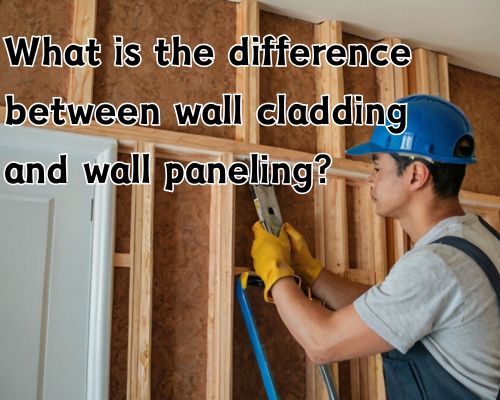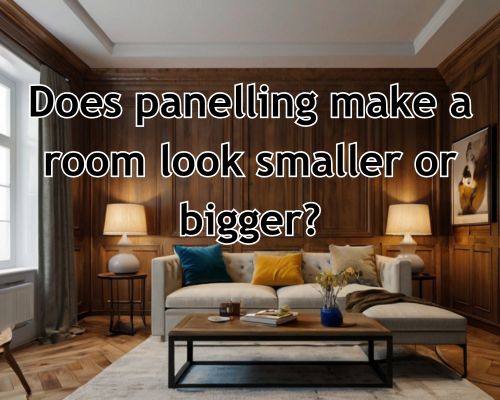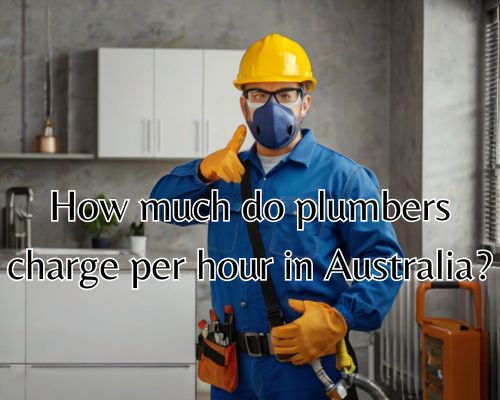When renovating or building homes in Mornington, one question frequently asked by property owners, builders, and even interior designers is: what is the difference between wall cladding and wall paneling? While both serve aesthetic and functional roles in residential and commercial properties, the two differ in material, purpose, and installation—making it crucial to understand the distinctions before picking up the tools or calling your local contractor.

Whether you’re refreshing a classic beachside bungalow in Mount Martha or revamping a modern townhouse near Main Street, knowing the nuances between these wall treatments can make or break the final result. Let’s have it with Leona Rodriguesi of Mornington Cabinet Makers.
Understanding Wall Cladding
Wall cladding refers to the external layer applied to a building’s structure, often designed to protect the underlying surface from environmental wear and tear. It’s used both outdoors and indoors, though it’s more commonly associated with exterior applications in areas like Mornington Peninsula where buildings face salt air, strong winds, and sudden weather shifts.
Common Materials Used in Wall Cladding:
- Timber cladding (popular in coastal regions like Sorrento)
- Vinyl
- Fibre cement
- Natural stone
- Aluminium composite panels
- PVC cladding
These materials are often chosen for durability, weather resistance, and fire safety—a particularly important concern in Victoria’s bushfire-prone zones.
Functional Benefits:
- Insulation and energy efficiency
- Noise reduction
- Enhanced waterproofing
- Protection against UV and sea air corrosion
- Modern aesthetic appeal
Cladding is also an effective way to increase curb appeal—a key selling point in Mornington’s competitive property market.
What is Wall Paneling?
By contrast, wall paneling typically refers to interior wall treatments, applied for decorative or functional purposes. It’s a go-to feature in Hampton-style homes, modern farmhouses, or renovated Federation houses that populate much of Mornington and its surrounding suburbs.
Popular Types of Wall Paneling:
- Wainscoting
- Beadboard
- VJ (Vertical Joint) panels
- Shiplap
- MDF decorative panels
- Acoustic wall panels (great for home offices or media rooms)
Unlike cladding, which prioritizes protection and structural integrity, paneling leans more heavily into aesthetic transformation—creating visual interest, texture, and even thematic personality inside a home.
Functional Benefits:
- Conceals imperfections in plaster or brickwork
- Adds insulation and acoustic properties
- Easy to repaint or refinish
- Enhances period or stylistic detail
Paneling is a design feature that adds value through atmosphere—think cozy textures in a Mount Eliza living room or a chic coastal vibe in a Blairgowrie Airbnb.
Key Differences at a Glance
| Feature | Wall Cladding | Wall Paneling |
|---|---|---|
| Primary Use | Exterior walls (some interior use) | Interior decorative walls |
| Function | Protection from elements, insulation | Decorative, covers surface flaws |
| Materials | Stone, metal, vinyl, timber, cement | MDF, timber, plywood, VJ, acoustic foam |
| Location Commonality | Outdoor facades, garages, garden walls | Living rooms, hallways, offices |
| Aesthetic Role | Secondary to structural purpose | Primary focus on design appeal |
| Cost (avg. in Mornington) | $120–$300/m² installed | $80–$150/m² installed |
Mornington Trends: What Locals Are Choosing in 2025
In Mornington’s current renovation boom, external wall cladding is booming in popularity thanks to its mix of style and climate resilience. Builders along the Nepean Highway corridor report a rise in composite timber-look cladding, which offers the rustic charm of wood without the maintenance headaches.
On the flip side, interior wall paneling is experiencing a comeback, especially in restored heritage homes. Homeowners are loving the warmth of beadboard paneling in kitchens and hallways, with many choosing painted finishes in soft greys, seafoam, and off-white—very on-brand for coastal interiors.
Which One Is Better for Your Mornington Home?
The short answer: it depends on your goal.
If you’re battling harsh sun, moisture, or simply want to protect your investment, wall cladding is your best bet. It acts as a defensive shield while simultaneously lifting the property’s facade. Many homes across Mornington and Mount Eliza are adding fibre cement cladding for its non-combustible qualities—a smart move in today’s climate-sensitive world.
If you’re more interested in elevating your interior, adding charm or sophistication to blank walls, then wall paneling delivers. From VJ boards in beach houses to luxe raised panels in more opulent builds, it’s a simple and affordable way to completely shift the tone of a room.
💡Pro Tip: Some modern projects combine both—cladding on the outside for weather protection and paneling on the inside for style continuity. Ask your Mornington-based builder or interior designer for ideas tailored to your specific floorplan.
Environmental Considerations
Residents in the Mornington Peninsula Shire are increasingly factoring sustainability into their construction choices. When selecting materials:
- Opt for FSC-certified timber
- Consider recycled cladding panels
- Use low-VOC paints and adhesives on panels
- Seek out locally sourced stone or timber to reduce transport emissions
Environmental compliance also matters for permits. For larger renovation jobs, check with the Mornington Peninsula Council to ensure you meet planning regulations—especially in areas under heritage or coastal overlays. For professional needs, visit https://morningtoncabinetmakers.com.au/.
Final Thoughts
So, what is the difference between wall cladding and wall paneling? In essence, it’s the function and the location of use. Wall cladding is your shield—tough, durable, and made for the unpredictable Australian elements. Wall paneling is your canvas—an expressive, flexible interior design element that brings texture, warmth, and class to any space.
If you’re renovating or building in Mornington or nearby suburbs like Mount Martha, Somerville, or Dromana, understanding this difference will help you make smarter design decisions that improve both property value and liveability.
Need Help Choosing?
For locals looking to upgrade their homes, talk to experienced professionals in Mornington who specialize in bespoke wall solutions. Whether you’re cladding an entire facade or looking to panel a statement wall in your lounge, getting expert advice can save you money, stress, and regrets later on.








